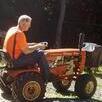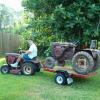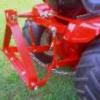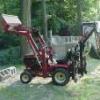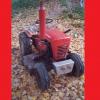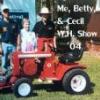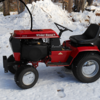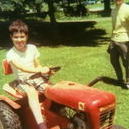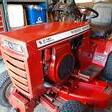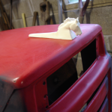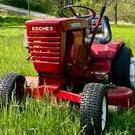Leaderboard
-
in all areas
- All areas
- Markers
- Marker Comments
- Marker Reviews
- Articles
- Article Comments
- Article Reviews
- Classfieds
- Classified Comments
- Classified Reviews
- Wiki's
- Wiki Comments
- Wiki Reviews
- Blog Entries
- Blog Comments
- Images
- Image Comments
- Image Reviews
- Albums
- Album Comments
- Album Reviews
- Files
- File Comments
- File Reviews
- Posts
-
Custom Date
-
All time
November 28 2011 - November 27 2024
-
Year
November 26 2023 - November 27 2024
-
Month
October 26 2024 - November 27 2024
-
Week
November 19 2024 - November 27 2024
-
Today
November 26 2024 - November 27 2024
-
Custom Date
02/20/2024 - 02/20/2024
-
All time
Popular Content
Showing content with the highest reputation on 02/20/2024 in all areas
-
18 pointsThe Doodlebug, not quite a tractor but better than horses Of the four million plus Fords produced between 1928 and 1931 about a half-million were trucks and busses of some sort. The AA was a heavy-duty truck for its time, the Ford AA truck was one of the most desirable trucks due to its relatively low price and dependability. As newer, faster, more comfortable trucks were produced the popularity of the AA trucks waned. That became the birth of the Doodlebug. The Ford AA could be purchased at a very reasonable price and converted into a functional tractor for farmer who wanted to go horseless but couldn’t afford a tractor. Some doodlebugs were built from cars but the rear axle strength was lacking and final drive gear ratios of the heavy truck were much more suitable. My grandfather’s doodlebug was a 1931 AA that had been shortened, fitted with two three speed transmissions, had dual rear wheels with chains, and a concrete slab was poured over the rear end for added traction. It was modified by a local welding/machine shop since my grandfather didn’t have the equipment or skills to do the job himself. The doodlebug could tow previously horse-drawn equipment with ease, the only drawback was the need for an operator to ride on the equipment to raise and lower a plow or others. It was faster than a team of horses and didn’t eat the grain and hay being produced. The heavy-duty rear axle and high final drive ratio of the dual transmissions reduced the load on the engine and clutch. Most doodlebugs, including my grandfathers, had the front and rear springs removed, the front has a center pivot and the rear axle is bolted directly to the frame. The wheelbase was shortened for greater maneuverability and fenders removed for better visibility. The Ford AA had mechanical brakes which are adequate for general use but leave a lot to be desired when towing a loaded hay wagon. Though we had several tractors available by the time I came along the doodlebug was still a valuable tool on the farm. We towed wagons, moved equipment, spread manure and had fun with it. It also powered flat belt driven equipment. After position the doodlebug in the right spot the right rear wheel would be removed and replaced with a flat belt pulley and the left rear tire would be blocked and brake locked down. With all the gearing speeds available it could handle any task. I doubt that any two Doodlebugs were alike, all were built by people with a variety of wants and needs to be met. One Doodlebug I saw at a tractor show had a pulley mounted on the drive shaft between the two transmissions. It drove a hydraulic pump which powered a hydraulic motor on a winch used to raise and lower a grader blade. Some have seating for one, some for two. Many Doodlebugs had a wooden truck-bed or tool box behind the operator. That is the fun part of these home-built units, no rules! Other early options to replace the horse will appear in the next few days.
-
11 pointsHi all, been following this forum for quite a while. Finally have time to dive into my addiction to these awesome tractors. Now that I've sold my business and retired, I'm catching up on things that I had to sideline, due to so many commitments. I've picked up a wealth of great info here, really helpful on my first restoration, an 856 that was a rustbucket, with a blown engine. I'll post some pics of that project, (Now complete) and my next one, a C120 I just picked up at auction, as it progresses. My first, a C121, I've had for twenty years, and still looks and runs perfectly. I'll be looking for a few attachments for that one soon. 20240112_141919.mp4
-
9 pointsA good family friend of mine was diagnosed with cancer just before Christmas. He supposedly had a lemon-sized tumor around his esophagus and was given three months to live. Last week after aggressive treatment and prayers from all directions he is in full remission. I said all of that to say this: with all the prayers about you, you are in good hands. I don't care what some may say, it makes a difference. @formariz- you are in our prayers!
-
8 pointsMaybe Toro got in the game late? Seen this on Marketplace.
-
5 pointsAnd Thanks, Ed! Really love this forum. Now, if I can just figure out how to get my posts to the correct place! I'm learning....
-
5 pointsThat’s a wrap for right now on this project. Waiting on a gasket kit for the k181.
-
5 pointsWhat is a 861 ? And what engine model is this? Did it run before the carb swap? Is the ignition actually working? The more accurate information you can provide the better, otherwise the only answers or suggestions you can receive are simple guesses. On a horizontal Kohler, the carb will not dump fuel into the crank case, it will spill out of the front. If you have fuel in the crankcase of one then it's most likely the fuel pump diaphragm is damaged. Which could also explain the non start. Or, when you say "dumping fuel into the engine" does this mean flooding the combustion chamber? Since you mention the plug is wet.
-
5 points
-
5 pointsYES! Do check the oil level and see if it is overfilled with gasoline diluted oil - before you try to start it. An IMMEDIATE oil change may be in order. Bill
-
5 points
-
4 pointsThanks! It was a really enjoyable and satisfying project. My first engine rebuild, too. Amazingly, it started and ran on the first try. I ran into one problem with the wiring, the manual didn't show the A wire from under the SG, so I wired it to ground, thinking that was the default. Smoke ensued. New voltage regulator,(After much searching) solved the problem. Now it's perfect. beware of that wire! I love that the cigar lighter even works! And, it has original Wheelhorse tires! If you have any questions, I will gladly answer as best I can.
-
4 points
-
4 pointsMy 86 year old neighbor has multiple myeloma and has been managing it for a number of years. The treatments have had ups and downs but he’s managing very well. Still able to ride his treasured BMW motorcycle with his grandson and others whether permitting. Drove to upstate NY last Friday for dinner with his sister (87 yo) then drive back home. A good 2 hour drive each way. Hang in there, as far as I know it is not curable but it is treatable..
-
4 pointsLike most early garden tractor companies, McLean started out with 2 wheel tractors. With electricity becoming more available people were switching their Maytag wash machines over to electric motors. McLean would buy up any Maytag engine that they could. They would then rebuild these engines and use them on their 2 wheel walk behind tractors. Next Mclean started building 4 wheel tractors like the one that I restored / built from scratch. 2 speed trans + reverse, no brakes. Their last model was the McLean Husky Big wheel. I have found a couple of these for sale but the timing was off for me. No brakes on the Big Wheel either. Not sure what they had against being able to stop.
-
4 pointsWow, that is really nuts. Let's hope that a second opinion is a better diagnosis. I'm not sure what my son-in-law's electrician and close friend had, but it was a form of leukemia. There were days when his lymph nodes under his arms were the size of apples. He continued to work and he continued his treatments, and vowed that each one was his last. He said no matter what, he was done with treatment, yet he'd decide to try one more, and here he is today, in full remission. There is always hope.
-
3 pointsBeen there done that and now plenty of time for tractor hobby. Great job on the 856 and hope to see more... Old pale face 856 @Achto has custody of and mine. Both sat for years but running in minutes.
-
3 points@loudtractor We were in Three Rivers not that long ago for school sports. Good food at that dive bar on the river….
-
3 pointsI have two of those. 1 if it were to fit, I’d try it! 2 the carb and engine don’t much care what brand they are. The engine will suck, squeeze, bang blow. The carb will supply the fuel and air to make the bang.
-
3 pointsOOPS! sorry, I thought that was where I had it! Still learning to navigate the site. Appreciate any help.
-
3 pointsI went and picked it up , all I can say is wow , this person had more then 60 wheel horse tractors , some restored and some original , from the 50 all the way up to the 90 , his restoration is second to none , I could have spent the whole day there just looking
-
3 pointsA while back I helped grandpa pick up a new to him trailer. Lots of cool fun stuff in a small yard!
-
3 pointsThat is a family heirloom, Take good care o it and it will take good care of you. Love to see a stay in the family.
-
3 pointsThe Kohler service manual has a lot of good information in it including carb adjustments. The problem could be a lack of spark, check that first.
-
3 points
-
3 points
-
3 pointsMy First wheel horse was the one I grew up on. I have tons of awesome memories on this tractor mowing with my grandfather (him on his 416H which I own now) and me on my dad’s 12 Automatic. We mowed 5 acres twice a week. When I moved into my house (my grandparents house) my dad gave me his 12 auto. I remember my dad tearing it apart and repainting it and adding the 18HP Briggs and Stratton Vanguard V-twin to it in our basement. He had red paint everywhere lol. I used it a ton around here but unfortunately it sat for the last 5 plus years. Well I finally got it into the garage a few weeks ago. I dug into the carb. Had to get a new gasket. Cleaned the fuel pump and changed out the fuel lines and filter. Unfortunately Alex and I couldn’t get the starter to work so pull start it was. So happy to have it running again. Now to steal front tires back from @WheelHorse_Kid and get it out and stretching its legs. It should start first or second pull now that the fuel system is primed. I also ran it for a while after it died at the end of the video and it throttles up and down perfectly fine. this is the tractor that started my crazy addiction. So glad it’s back to running.
-
3 pointsI have an unmolested C-165 automatic, I can check it out tomorrow and take some pictures of the wiring harness.
-
3 pointsFound this old picture of me in my grandfather back in 1974 , my stepdad still has this wheelhorse , I’m hoping to get it this year , I know if I ask him he would give it to me , so I can restore both next fall
-
3 pointsDon't recall ever seeing an ignition switch with a M and an I terminal. Could the I possibly be an R or A?
-
3 points
-
2 points
-
2 pointshad an electrical on/ off ,to a very solid , set up , so I thought , ended up putting new wire ends , into an electrical plug in, re arraigned wires , back to solid running . sparky , pete
-
2 pointsGreat introduction and awesome job on your restoration of the 856. Thank you for becoming a supporter of Red Square.
-
2 pointsThe ignition switch was actually marked with L not an I . Bought a waterproof fuse holder now and the light switch is still working, just need to get some PAR LEDs and hook them up. Thanks all
-
2 pointsAlways a few at Steam Pageant in Canadaiqua, NY.
-
2 pointsAs Jim @WHX?? said (can't believe I'm saying this and agreeing with him!) Follow the wire from the ammeter. Usually it goes to the solenoid and is on the same terminal as the positive battery cable is on. My C145 had a fuse holder on that wire. This pic is for reference only. It is not from a tractor The fat red wire is from the battery. The small red wire with the tape is going to the the key switch ect. A fuse holder on your tractor should be on this wire Or on this diagram Follow the green wire from the solenoid to the ammeter. fuse should be somewhere on there.
-
2 points
-
2 pointsBeautiful restoration, sir! Im in the process of restoring my own 856 and I love the way you did yours. An 856 was my first horse so Im really partial to them. Mine as well was a rust bucket. It was sitting under a tree for about 20 years.
-
2 points
-
2 points
-
2 points
-
2 points
-
2 points
-
2 pointsI just got the # off my grandfather wheel horse , it the same year , the only difference I see is the one I’m picking up tomorrow is a 1973 auto 10 and the other one is 1973 8hp 4 spd . Kinda weird
-
2 pointsWonder how the three wheeled rigs are on sloped terrain?
-
2 pointsI'd use it. What are ya saving it for ? The next guy ? Enjoy it yourself.
-
2 pointsHad it out to do a trailer of fire wood yesterday. First time it’s really been out and ran for any length of time. The carb definitely needs to be dialed in a little better and it definitely needs an oil change. Other than that it handled a small load of wood with no issues.
-
2 pointsNot today, as such. But a friend of mine took a photo of my brother and his wife, on his birthday in the summer of 2023 on an analogue camera and I love that it looks so timeless like it could be any time from the 70s to today
-
2 pointsGentlemen, Today I reinstalled the head on the ‘69 Charger 12 complete with a new gasket, spark plug and bolts. There’s something about shiny new hardware that really gives me the fizz. Anyone else?
-
2 pointsI put a 16 Vanguard in my C-120 back in 1989 it has a 18 now. Bought the C-120 new. I have parts of the 16 Vanguard running in a 312-8. Good to see yours back running.

